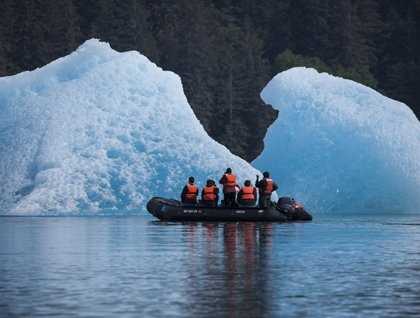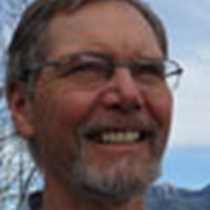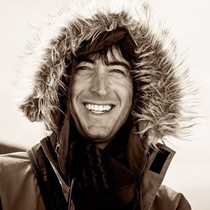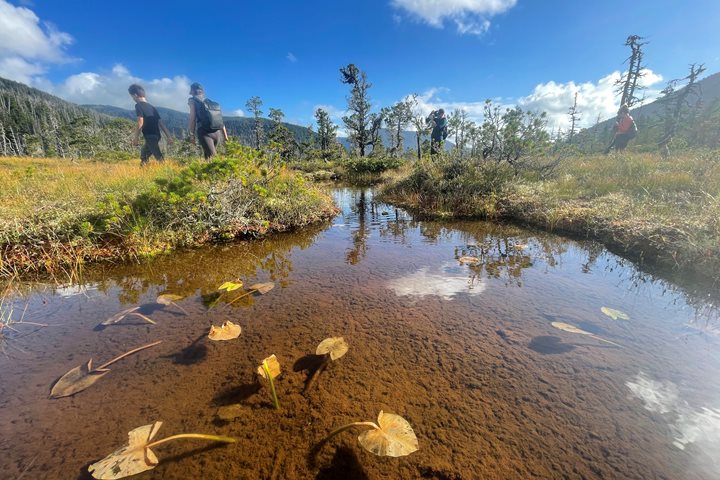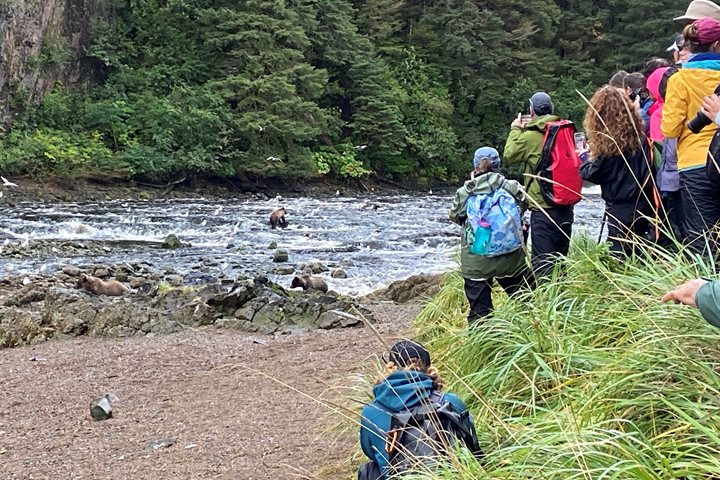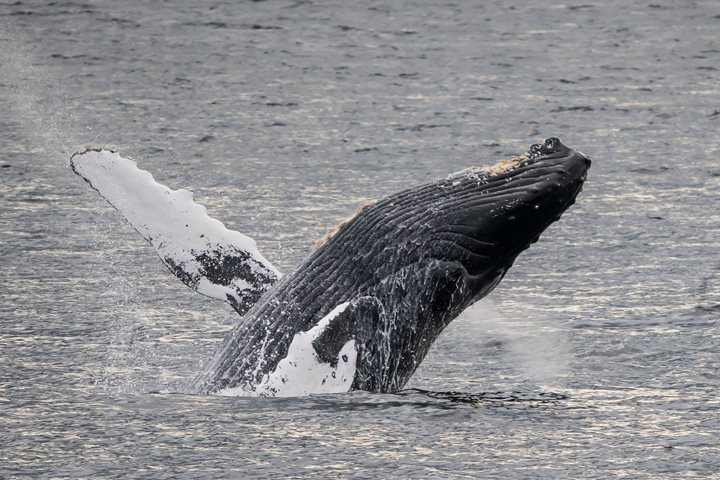Following a late evening of watching humpback whales in Stephens Passage, the morning sun greeted us with clear skies, calm winds and a very comfortable 60*F. After a delicious breakfast, we loaded into expedition landing craft to see large icebergs which had floated down from their calving some 10 miles up the ice choked LeConte glacier fjord. As we crossed the terminal moraine, a slight color change in the ocean water indicated the presence of glacial flour. Our journey brought us close to icebergs the size of small houses beached on the shores, left there from the ebbing tide. Discussions ensued as to the rate of glacier retreat potentially related to climate change with National Geographic Sea Lion’s naturalists sharing that one needs to also take a series of long-term measurements of the ice field depth to better evaluate potential impacts of climate change on ice field mass. Further conversation shifted to the contrast to the white tops of the icebergs exposed to the atmosphere and the bluish tinge of the normally submarine section (now suspended on a moraine shelf by the low tide) caused by the increased density of the ice when placed under great pressure inside a glacier. It is this ice that was historically used to prevent fish from spoiling while being transported to Seattle, Portland and other west coast markets in the early 1900s.
When touring LeConte Bay, we observed glaucous winged gulls, kittiwakes, marbled murrelets as well as harbor seals and bald eagles.
Shortly after returning to the National Geographic Sea Lion, naturalist Bryan Bates presented a lecture on “Habitats of and challenges to the Tongass National Forest (TNF)”. After a short intro on abiotic factors affecting biome structure, Bryan delved into the different stages of succession found in SE Alaska’s large temperate rainforest. He then presented a brief history of logging and an examination of the challenges TNF faces in transitioning from logging old growth forest to more sustainably harvesting successionally regenerated younger forests. After a brief interlude to the recent transfer of 70,000 acres of forest to the Sealaska native corporation (per ANCSA), the session concluded with a question and answer session on how we should best manage our national forests.
After docking in Petersburg, numerous guests shuttled across the bay to experience a walk through a muskeg, a bio-community that encompasses roughly 20% of Alaska’s lands. Due to slow drainage and burial of plant material in an anaerobic environment, the slow decomposition of organics creates acidic waters and soils. Having walked through a temperature forest canopied by spruce and hemlock, we emerged into an open field with scattered shore pines, bog bean, sphagnum moss, bog orchids and (perhaps the most intriguing plant we will find) an insectivorous sundew. Some guests walked more quickly through this anomalous landscape, while others took their time to photograph the diversity of yet a different biological community.
Returning to Petersburg, Ashley Knight led an “information walk” detailing the history of and processes related to commercial fishing, the principle occupation of and certainly the historic reason for the town of Petersburg. Meanwhile, Jeff Litton took the opportunity to help guests become better photographers in a small settlement in SE Alaska.
As if that wasn’t enough, we returned to the ship for the feast of the week – endless Dungeness crab legs, plus ribs, and cornbread. The flavors of dinner were a perfect complement of the history of this small town. As we enjoyed another epic Alaskan sunset from the bow of the ship, a couple of humpback whale sightings added the final touch to a spectacular day.

